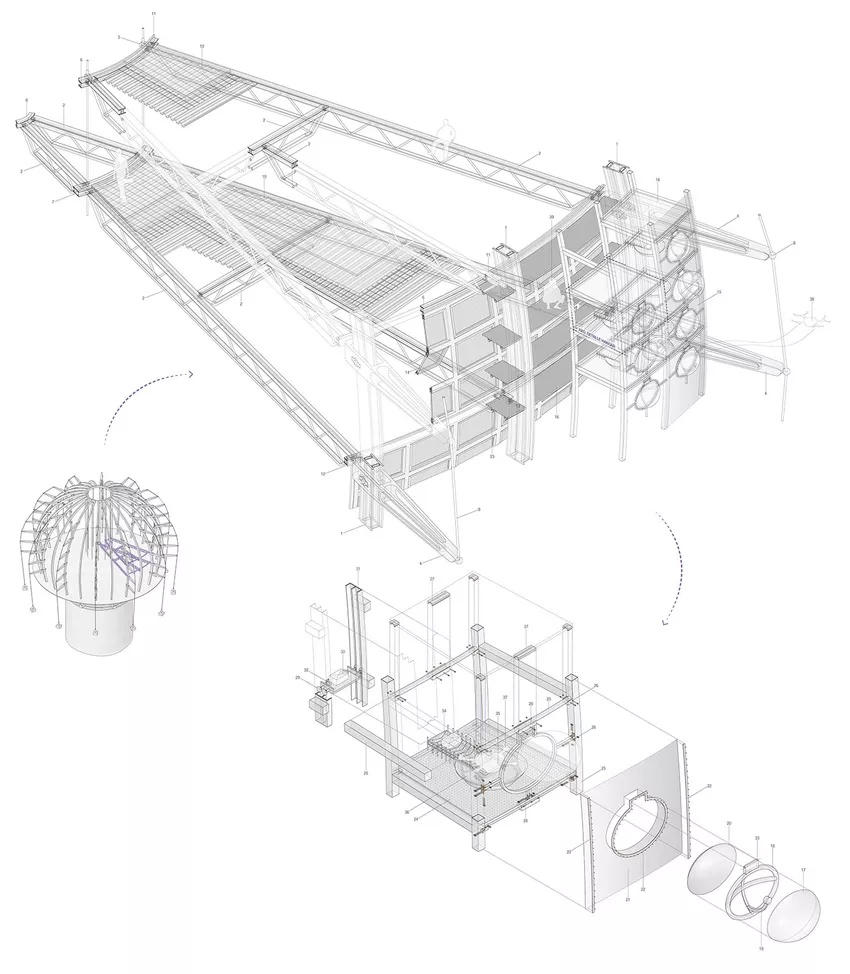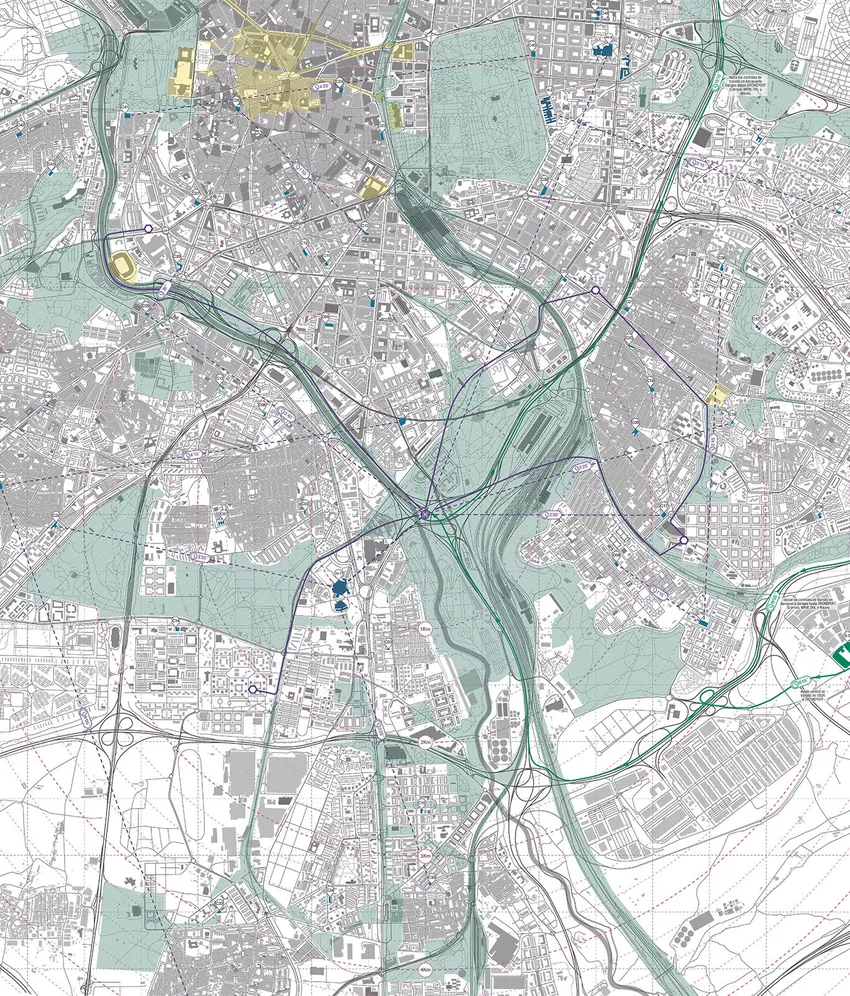
Why the transport of goods with drones in cities will be a real alternative
Cities are developing by leaps and bounds in the face of a constantly growing population that needs urban planning and complex infrastructures to meet the needs of its inhabitants.
It will be necessary to propose new formulas that minimize the impact for the development of daily activity. In this case, we want to cover the future problems of freight transport in cities and why one logistics network based on drone technology it can be a real alternative to a problem that is expected to be difficult to solve through a project carried out by the architect Saúl Ajuria Fernández.
Concept
The design of projects considering the problems that will arise in the future allows us to propose new concepts that make our ideas an engine of development and innovation. Based on this approach, aspects related to logistics are studied and analyzed.1 and the transport2.
“Set of means and methods necessary to carry out the organization of a company, or a service, especially distribution. " 1
“Action and effect of transporting or being transported. System of means or infrastructure to drive people and things from one place to another. Vehicle dedicated to such a mission. " 2
Definition of the RAE.

The first analysis focuses on the activity of parcel delivery, of which an exponential increase is presumed in the coming years, due, among others, to the purchase of items online. It is concluded that this increase in activity combined with current logistics systems would lead to the collapse of infrastructures.
Taking into account that 80% of shipments weigh less than 2 kg and have a volume less than a shoe box, it is decided to propose the use of drones as a transport vehicle, which allows to achieve great benefits in time and cost of shipments.
In this way, the objective of the project is defined: design a logistics network that allows and optimizes the transport of goods with Remotely Controlled Air Vehicles in urban areas.
For this network to be carried out, it requires the development of several elements that do not exist until now, such as: a building that enables logistics, new distribution systems, new elements for receiving parcels and a new infrastructure network that is adapt to existing city.
Location
We go on to raise what should be the characteristics of the plot where the Logistics Center is located. In the first place, it must be located in a highly densified urban space, so as to maximize the number of potential users of the system that are in the radius of action of the Logistics Center.
Second, the site must be accessible from high-speed roads to guarantee rapid communication with the transit centers of the distribution companies.
Taking into account the previous points, it is decided to locate the project in Madrid, within the South junction of the M-30, which is characterized by being a urban void in a state of disuse and with numerous potential users of this new network in a radius close to it.

The Nudo Sur has as a peculiarity the presence of the Manzanares River and three adjoining parks: Tierno Galván, Parque Lineal del Manzanares and Madrid Río, which are not connected to each other.
The urban regeneration of the area through a subtle intervention consisting of a network of fast paths and slow trails that connect the building and the parks. The Logistics Center emphasizes this new connecting character of the site, leaving the ground floor free and thus giving continuity to the park.


The "Urban Droneport"
It is considered as a great machine in charge of receiving, labeling and classify packages that arrive from the transit centers of different companies to later, through RPAS, transfer them to the destination point.
Similarly, the reverse process of collecting packages and sorting for shipment by road transport to the transit centers is carried out.

The "Urban Droneport" program consists of a Logistics Center and a State Institute of Technology Development associated with RPAS. The Logistics Center is located on the lower floors, thus ensuring a quick connection with the vehicular accesses and favoring the continuity of the chain of parcel distribution towards the hangars located in the building envelope.
On the upper floors the State Institute for Technology Development is located, which seeks to generate a micro-society for research and training, in an agile and flexible work space that adapts to different needs and that is related to the Logistics Center in the spaces common.
The program is presented as two symbionts, in this way the Logistics center It functions as a great field for the application of the new technologies developed in the Institute and this in turn connects with the Logistics Center in some spaces to establish control over the RPAS: repairs, improvements and implementation of new systems.

The project develops in a linear way; the definition of the concept to be developed connects us with a specific location and program. Continuing with this evolution, it is proposed how is the formalization of said concept and program.
The “Urban Droneport” is based on a process architecture, which optimizes the operation of the system and contributes to enhancing all aspects for the development of the new infrastructure. After an analysis of these processes, a spherical formalization is chosen, which makes it possible to develop floors and circular sections, thus favoring both the distribution and parcel management like the flight of aircraft avoiding the appearance of turbulence.
Due to the location of the building in an aggressive, noisy and highly polluted environment, it was decided to isolate it from the environment and turn it into the interior relationship, enhanced by a central patio that allows the entry of light and the visual relationship between the different floors. The location and design of the structure also go along the same lines and allow the interior space to be freed up. In the same way, hangars contribute to the isolation of the environment by constituting the outer skin of the building.

Focusing on the constructive and structural aspects of the building, the following principles govern: prefabrication, modularity and rationality. It seeks to minimize the elements and types of joints and opts for a metallic structure with dry joints that allows both its assembly and disassembly, as well as its extension or modification. The building is modulated in such a way that the details of its construction are resolved with just one of its twelve segments.
The hangar configuration for the drones It is based on industrial storage systems and is independent of the main structure, which allows the modification of the dimensions of these according to the needs. In the hangar doors, a system for concentrating and expanding the solar rays is designed that allows the production of photovoltaic energy, thus covering a large part of the building's energy demand.


The new Infrastructure network and its growth

To make the operation of this new transport system feasible, a new infrastructure network which, together with the Logistics Center, is adapted to the existing city. The network is based on three actions: first, the use of the city as a three-dimensional map that allows us to generate this new network physically detached from the existing ones today.
Second, the installation of specific elements in the buildings that integrate the existing city with the new network. Finally, the design of the parcel delivery and collection items that respond to two casuistry: in buildings accessible by façade it is done through individual mailboxes and, in buildings that are not accessible by facades, it is done through community mailboxes that can be located on the roof of the building itself or in a nearby public space.


Based on the analysis carried out of the urban voids of the city of Madrid, the growth of the new transport network through specific actions at various junctions of the M-30, which have a large number of potential users in their radius of action due to their condition as an intermediate space between the city's core and the first extensions that were made of it.
It is possible to install a logistics network in the almond of Madrid with only four Logistics Centers that have a radius of action of 4 kilometers.

Finally, it should be noted that this new infrastructure allows the establishment of other different and independent connections from the network of the transport of parcels for commercial purposes, such as an emergency health network between health centers and hospitals or citizen safety nets.




Project data
- Author: Saúl Ajuria Fernández
- Execution year: 2016
- Area: 7100 m2
- Location: South Nudo M-30, Madrid.
- Project status: Conceptual
- Type: Infrastructure and Transportation
- Image credits: Saúl Ajuria Fernández (Credit of all drone images to Matternet, Inc - http://mttr.net).


